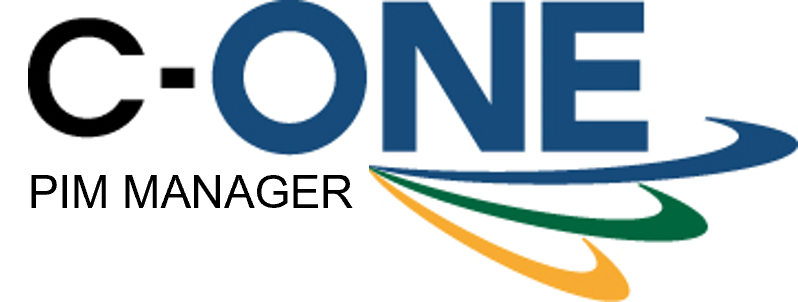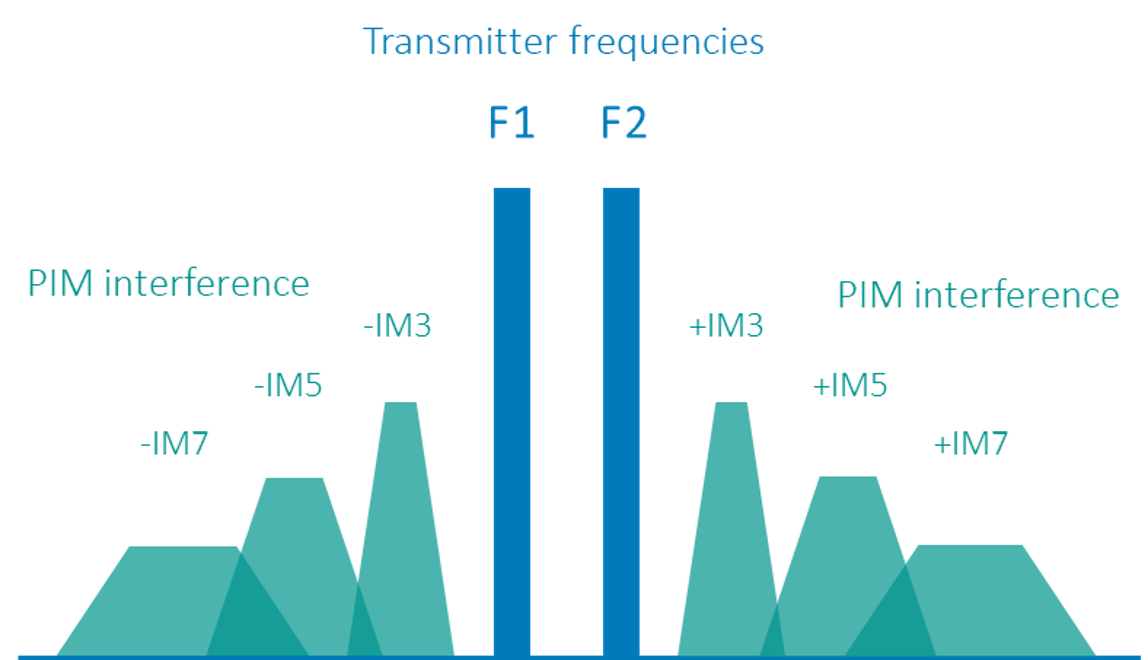What is PIM?
Passive InterModulation occurs when signals from multiple high-power transmitters interact, typically with objects in the environment, creating nonlinear effects that interfere with the uplink signal and severely degrades throughput.
It’s not a new problem for the mobile network, but one that is difficult to identify and solve. Many mobile operators don’t know there is a PIM problem until after installation and site monitoring reports flag a performance issue.
PIM is one specific type of possible interference. Also see these others:
Common Sources of PIM
Old cables, connectors and antennas
Diplexing new carriers onto existing cable runs
Cluttered cell towers and rooftops with many reflections
Frequency band combinations vulnerable to Passive InterModulation
The Cost of PIM
In our experience, a simple rule of thumb is that for each dB of Passive Intermodulation, throughput is reduced by approximately 8%. Hence a 6 dB PIM interferer can reduce throughput by half. In extreme cases, new sites cannot be put into service until the interference is resolved.
The reduction in throughput directly impacts revenue. Indirectly, slower speeds impact competitiveness and drives up subscriber churn. If you are interested in an impact analysis for your network, contact us for more information.
Case Study
Vulnerable band combinations
The Problem
Close proximity of another operator's band created Triple beat and IM3 Passive InterModulation. Accessibility and retainability suffered as a result.
The Solution
Significant KPI improvements were achieved after the c-ONE PIM Manager was deployed.
The Outcome
+41% Recovery in uplink accessibility & retainability
+22% Downlink throughput
+45% Uplink throughput
+53% Uplink traffic volume
-13% Drop rate
9dB RSSI improvement
6-9dB PIM removed

Benefits of ISCO's Solution
Avoid truck rolls
Eliminates potentially lengthy and costly troubleshooting on site to identify the source of PIM and resolve the issue. The c-ONE PIM Manager works on the CPRI link so it does not require access to the cell site.
Higher Tx power
When the interference is removed, the downlink power can be increased. The stronger signal quality leads to greater range and higher traffic capacity.
Versatile and Adaptive
This is a dynamic solution operating in real-time that adapts to the changing environment, and can remove intermittent PIM interference. Specific frequencies are not hard-coded into the algorithm.
How it Works
The c-ONE PIM Manager from ISCO is deployed on the CPRI uplink between the BBU and the radio, and is often co-located with the BBU.
Advanced, patented algorithms operate on the raw I/Q data to detect, analyze, and remove PIM in real-time, regardless of its source.
PIM levels before and after ISCO solution applied
Calculating PIM
The incidence of PIM is growing as new bands increase the amount of spectrum in use and wireless networks continue to add more small cells and cell sites. It typically takes time, experienced technicians, and sophisticated equipment to identify and locate the sources of PIM.
PIM occurs when frequencies mix, caused by a variety of factors. The likelihood of PIM being present can be predicted by formulas that use the frequency bands of interest in the equation. The same calculation can be used to confirm the degradation comes from PIM and not some other type of interference and can help identify potential sources. A PIM calculator is a tool programmed to perform those calculations. It allows network operators to resolve the impaired network condition more quickly, saving time and money.
Use ISCO's PIM Calculator to determine whether your frequency bands or others in use in the area have the potential to create PIM in your bands of interest.

